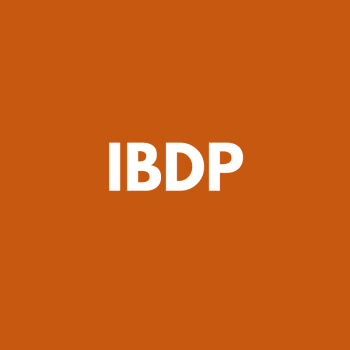1. Why Study IBDP Economics?
A Gateway to Understanding the Global Economy
IBDP Economics provides students with a deep understanding of economic principles and their real-world applications. This course fosters critical thinking, analytical skills, and an appreciation of the interconnected nature of local and global economies.
Key Benefits of Studying IBDP Economics
- Holistic Perspective: Gain insights into microeconomics, macroeconomics, and global trade.
- Analytical Skills: Develop the ability to interpret economic data and evaluate policies.
- Global Relevance: Understand how economic decisions impact societies worldwide.
- Career Preparation: Build foundational skills for careers in finance, policymaking, research, and international development.
Skills Developed
- Critical thinking and evaluation.
- Quantitative analysis and interpretation of economic data.
- Ethical and global perspectives in economic decision-making.
- Effective communication and research.
2. Core Structure of the IBDP Economics Curriculum
The course is divided into four key sections, with additional higher-level (HL) extensions for students seeking deeper understanding.
Core Topics (Applicable to Both SL and HL)
- Introduction to Economics
- Basic economic concepts, scarcity, and opportunity cost.
- Positive and normative economics.
- Microeconomics
- Market structures, elasticity, and market failure.
- Government intervention and efficiency.
- Macroeconomics
- Measurement of economic activity (GDP, inflation, unemployment).
- Fiscal and monetary policies.
- Economic growth and development.
- The Global Economy
- International trade theories and barriers.
- Exchange rates and balance of payments.
- Globalization and economic development.
HL Extensions
- Theory of the Firm
- Cost structures, revenue models, and profit maximization.
- Market structures: perfect competition, monopoly, monopolistic competition, and oligopoly.
- Advanced Macroeconomic Theories
- Keynesian and neoclassical models.
- Phillips curve and stagflation.
- Advanced Trade and Development Concepts
- Terms of trade and trade protectionism.
- Policies for economic development.
3. Comparing SL and HL in IBDP Economics
SL Overview
- Focuses on foundational economic principles and practical applications.
- Approximately 150 hours of instruction.
- Suitable for students interested in basic economic literacy.
HL Overview
- Includes advanced topics and mathematical modeling.
- Approximately 240 hours of instruction.
- Recommended for students pursuing careers in economics, finance, or policymaking.
Key Differences
| Aspect | SL | HL |
| Depth of Content | Foundational understanding. | Advanced theories and analysis. |
| Mathematical Rigor | Limited quantitative analysis. | Extensive use of quantitative tools. |
| Additional Topics | None | Theory of the Firm, Advanced Macro. |
| Assessment Complexity | Simplified assessment structure. | Includes Paper 3 for data-response questions. |
4. Marking Scheme and Assessment Structure
Internal Assessment (IA)
The IA contributes 30% (SL) and 20% (HL) to the final grade. Students write three commentaries based on real-world economic issues.
Assessment Criteria
- Criterion A (8 marks): Selection and explanation of extracts.
- Criterion B (8 marks): Application of economic theory.
- Criterion C (8 marks): Analysis and evaluation.
- Criterion D (4 marks): Effective communication.
External Assessments
- Paper 1 (30% SL, 20% HL)
- Structured essay questions covering core topics.
- Paper 2 (40% SL, 30% HL)
- Data response questions focusing on macroeconomics and global economy.
- Paper 3 (HL Only, 30%)
- Quantitative and data-response questions requiring advanced analysis.
Marking Scheme Insights
| Component | Marks | Weightage |
| Paper 1 | 40 | 30-20% |
| Paper 2 | 60 | 40-30% |
| Paper 3 (HL) | 30 | 30% (HL Only) |
| Internal Assessment | 30 | 30% (SL), 20% (HL) |
5. Internal Assessment: Real-World Economic Analysis
The IA enables students to connect theory with practical issues by analyzing current events through an economic lens.
Tips for a High-Scoring IA
- Choose Relevant Articles: Focus on recent events with clear economic implications.
- Apply Economic Theories: Use diagrams and models to explain the issues.
- Critically Evaluate: Discuss limitations and broader impacts of policies or trends.
Example IA Topics
- Analyzing the impact of minimum wage policies.
- Examining the effects of tariffs on international trade.
- Evaluating the role of central banks in managing inflation.
6. Recent Updates to the IBDP Economics Curriculum
Innovative Additions
- Behavioral Economics
- Exploration of decision-making beyond rationality.
- Sustainability Focus
- Emphasis on environmental economics and sustainable development.
- Digital Economy
- Coverage of e-commerce, fintech, and digital currencies.
7. Career Opportunities with IBDP Economics
University Pathways
- Economics: Specialize in micro or macroeconomic studies.
- Finance: Focus on investment analysis and corporate finance.
- Public Policy: Prepare for roles in governance and policymaking.
Job Prospects
- Economic Analyst.
- Financial Consultant.
- Policy Advisor.
- Research Economist.
8. Succeeding in IBDP Economics
Study Strategies
- Understand Core Concepts: Focus on elasticity, market structures, and fiscal policies.
- Engage with Current Events: Connect theory with real-world examples.
- Practice Diagrams: Develop clear and accurate economic diagrams.
Time Management Tips
- Allocate weekly hours for theory, case studies, and practice papers.
- Use spaced repetition for key terms and concepts.
9. Top Resources for IBDP Economics Success
Books and Study Guides
- Oxford IB Diploma Programme Economics: Comprehensive syllabus coverage.
- Cambridge Economics Resources: In-depth case studies and exercises.
- Economics for the IB Diploma: Tailored for exam preparation.
Mock Papers and Past Papers
- IB Documents Repository: Access official IB past papers.
- RevisionVillage: Topic-based practice questions.
Video Tutorials
- CrashCourse Economics: Simplified explanations with engaging visuals.
- Khan Academy Economics: Detailed video lessons on core topics.
Interactive Tools
- Economist.com: Access global economic news and analysis.
- Trading Economics: Real-time data on economic indicators.
10. FAQs: Clearing Common Doubts
Q1. What is the difference between SL and HL in Economics?
SL focuses on foundational concepts, while HL includes advanced topics like Theory of the Firm and quantitative analysis.
Q2. How can I excel in the IA?
Choose relevant articles, use economic theories effectively, and provide critical evaluation.
Q3. Which topics are most challenging in this course?
Elasticity, macroeconomic policies, and HL-specific quantitative topics are often considered challenging.
Q4. How important is Paper 3 for HL students?
Paper 3 is crucial for assessing advanced analytical skills and accounts for 30% of the HL grade.
Q5. Are diagrams essential for exams?
Yes, clear and accurate diagrams are vital for explaining economic concepts and policies.
Q6. Can I switch from SL to HL midway?
Yes, but you’ll need to cover additional HL topics and prepare for Paper 3.
Q7. What careers can I pursue with this course?
IBDP Economics prepares students for careers in economics, finance, public policy, and research.
Q8. How do external assessments evaluate critical thinking?
They test your ability to apply theory, analyze data, and evaluate policies in structured responses.
Q9. What resources are best for revision?
Official textbooks, past papers, and platforms like Khan Academy and RevisionVillage are excellent for revision.
Q10. How does this course prepare me for university?
It builds a strong foundation in economic theory, quantitative skills, and real-world applications, ideal for higher education in economics and related fields.
Conclusion
IBDP Economics is more than a course; it’s an opportunity to understand and influence the global economy. With its rigorous curriculum, practical applications, and career readiness, this program equips students to excel in a rapidly changing world.

